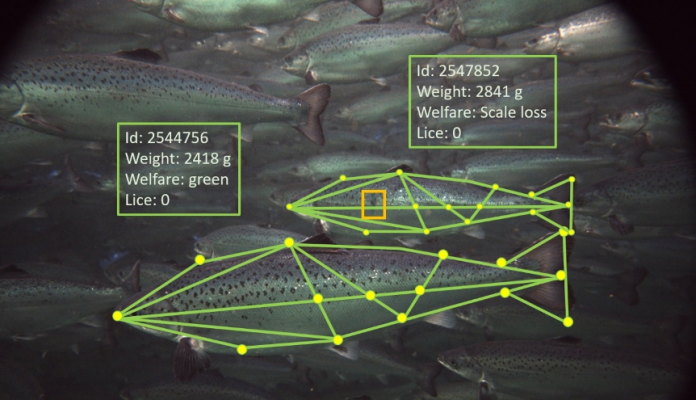New technological solutions make it possible to log data about salmon in fish farms automatically. “Deep Learning”, a branch within Artificial Intelligence, is, for example, a technique based on training the system can extract information from millions of images of fish. Robust detection of sea lice, measuring various operational welfare parametres, or estimating fish weights has now become possible thanks to the rapid technological developments we have seen in recent years.
But what are we really going to do with all this data about the fish? What can we use it for and why is the data worth its “weight in gold?”
Data provides knowledge. Increased knowledge of fish, production, and process provides increased profitability, the opportunity to optimise operations, a more sustainable industry, and greater competitiveness. For example, think of the average weight measurement of fish. By following the growth over time and looking at this together with, for example, environmental logging data and feed logging, we can see under what conditions it can be beneficial to feed, which is effective, and when we can save resources to reduce it.
Machine learning allows you to automate the process of extracting information from large amounts of data (“Big data”). By training the algorithms so that they make the right decisions, valuable information from a site that is run well can be transferred to others that are run less efficiently. Digitalisation will provide increased competitiveness for salmon farmers who invest in it. This means that getting started with logging data is extremely important because you need data logging overtime to succeed with this strategy.
There are currently several suppliers that have systems that automatically count lice and detect other parametres on the fish. Common is that the data provides the opportunity to streamline operations. Most solutions are based on camera technology. With machine learning on the images, size is measured, lice are counted and operational welfare parametres are detected. Most often, data is transferred to a cloud-based resource and can be downloaded through a web portal.
Continuous automatic monitoring of fish can also contribute to even better fish welfare and a more sustainable industry. But this requires salmon farmers to use their biological knowledge and that of production to take action if the monitoring reveals that this is necessary. In the long term, the aim of the aquaculture industry should be to obtain a machine learning-based decision-making support that advises on taking action.
But to achieve this, we need DATA. Lots of DATA.



